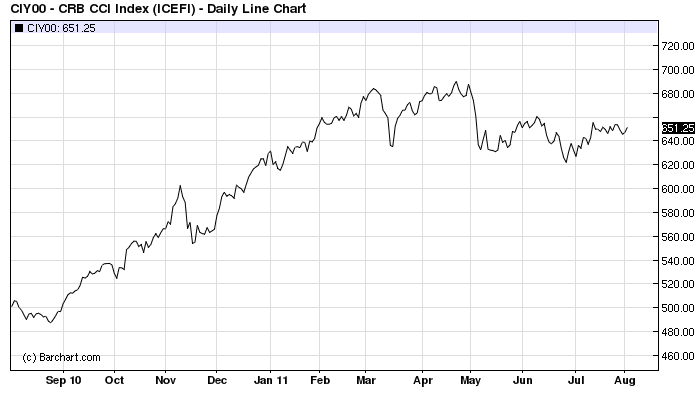I’ve been warning for a couple of months that the US economy is in trouble. It’s hasn’t really been that hard to see, so long as you recognise its underlying condition.
The US economy is in a depression. It’s not quite the kind we saw in the 1930s but it’s a depression nonetheless, just slower moving. There’s actually no precise definition for a “depression” in economics so I’m going to take the populist route and rely on that provided by Wikipaedia:
In economics, a depression is a sustained, long-term downturn in economic activity in one or more economies. It is a more severe downturn than a recession, which is seen by some economists as part of the modern business cycle.
Considered, by some economists, a rare and extreme form of recession, a depression is characterized by its length, by abnormally large increases in unemployment, falls in the availability of credit— often due to some kind of banking or financial crisis, shrinking output—as buyers dry up and suppliers cut back on production, and investment, large number of bankruptcies—including sovereign debt defaults, significantly reduced amounts of trade and commerce—especially international, as well as highly volatile relative currency value fluctuations—most often due to devaluations. Price deflation, financial crises and bank failures are also common elements of a depression that are not normally a part of a recession.
Anything on that list that is not either a part of the everyday experience of the US economy already, or a plausible threat?
Yes, the US is in a depression but one that has been slowed down by the lessons of the last Great Depression. That is, the last few years have seen huge bank rescues to prevent the kind of calamitous negative feedback loops described by Irving Fisher, as well as huge (though not large enough) Keynesian fiscal stimulus to fill the hole in demand, and enormous monetary stimulus prescribed by Milton Friedman to prevent deflation.
All three of these dead economists are hard at work in treating the US economy, yet it is responding like it shares their grave.
Some excellent charts from Calculated Risk today make the point perfectly. Some four years after the last recession began, real GDP has still not scaled its former peak:
Industrial production is worse still:
Employment is horrible:
And unsurprisingly, real income insuffiicient to boost demand:
When I look at these charts, the only surprise I feel is that others are surprised at the US economy’s ongoing swoon whenever any of the three dead economist’s prescriptions are reversed.
Yet, that is where we are today, with QE2 finished and the new debt-ceiling deal about to rip 1.5% out of GDP over the next twelve months, according to both Dean Baker and J.P.Morgan. And this, for an economy that in the last quarter grew by 0.5% annualised.
So, can we look to new stimulus from monetary policy? According to The Economist, nope:
Mr Bernanke is implicitly asking the government not to place a short-term strain on the economy. In doing so, he is hinting that the Fed can’t be counted on to offset the impact of short-term fiscal tightening, either because 1) he believes the Fed is powerless to do so, 2) he believes the risks to trying to do so outweigh the benefits, or 3) he believes the Fed faces institutional constraints that prevent it from reacting appropriately. Whatever the actual reason, the suggestion is the Fed can’t (or can’t entirely) offset the negative impact of fiscal tightening.
Now, additional easing may well be forthcoming. Last week’s dismal GDP report makes Fed intervention far more likely, if not yet the most likely outcome. But as I’ve written before, the Fed doesn’t appear to respond to employment trends or output trends nearly so much as it reacts to movements of inflation outside its comfort zone. Thanks to recent events, QE3 seems a real possibility, but I’m not going to count on it until the grinding impact of near-zero growth and austerity drive inflation and inflation expectations to levels too low for the Fed’s tastes. That may take a while. In the meantime, the employment situation will grow worse, and the threat of a return to outright recession will rise. It’s an ugly situation, but we can’t say that the Fed didn’t warn us.
Regular readers will recognise the game of chicken I identified months ago between the Fed and commodity prices. The Fed needs commodity prices to fall, especially oil, to give it the deflationary excuse for more stimulus.
Sadly, last night’s action was not encouraging. Despite a thumping 2.5% fall in the S&P500, the CRB index rallied nearly one percent, largely on grains. Oil fell 1% but it’s just not enough. Here’s a one year chart of the CRB:

I have argued that we’ll see QE3 before a cycle ending event. And that still seems possible, although the convergence of weakening Western growth and an imminent Spain/Italy crisis suggests darker possibilities.
But I have one further point to add that is giving me second thoughts. Australian policy-makers are fond of saying that parts of the national economy must shrink if there is to be enough room for commodity boom investment to grow without causing inflation. Could it be that China’s commodity demand is so voracious, so spectacularly large, that the same line of reasoning can be applied to the entire US economy?
That is, Chinese consumption of commodities has so imbalanced the supply and demand equation (such as it, channeled through financialising markets), that the entire US economy must shrink in order to give China the space to grow (on its infrastructure model) without unsustainably spiking the price of the building blocks of the global economy – commodities?
If that’s true, then we’re going to need a cycle ending event to reboot the US economy, or we’re headed for a spectacular inflationary blowoff.





